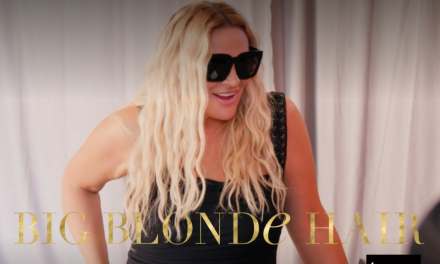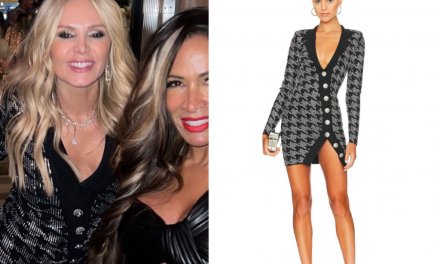
Most of us
need various aids to help us feel good. From moisturisers and serums for our
dry skin to hair dye to enhance our hair.
We often only
consider whether or not the products work. Is that expensive moisturiser worth
it? Does this shade of lipstick suit me? Is this the best dye for my hair? We
are looking at their effectiveness and cost when we ask these questions.
Yet there
is more and more evidence that we should be asking another, more important
question: Will this product harm me?
It’s easy to believe that manufacturers run tests for safety and government
watch dogs protect us from the unscrupulous.
However,
for our own safety, we should not be reassured by assumptions. The long-term
effect of exposure to the various chemicals used in beauty products is
difficult to assess, and animal studies cannot necessarily be translated into
what happens in the human body.
This work
often depends on academics rather than on the manufacturers, is often poorly
funded, and may involve painstaking research over a long period.
What Does the Research Say?
Scientists
at the National
Institutes of Health found that women who regularly used
permanent hair dye in the year prior to enrolling in the study were 9% more
likely than women who didn’t use hair dye to develop breast cancer.
The
research team found little to no increase in breast cancer risk for
semi-permanent or temporary dye use.
The same
study found that women who used hair straighteners at least
every five to eight weeks were about 30% more likely to develop breast cancer.
A University of California study that ran in 2013 found lead, cadmium, chromium, aluminium, and five other metals in a sample of 32 different lipsticks and lip glosses commonly found in drugstores and department stores.
Some of the metals were detected at levels that could raise potential health concerns. The researchers said:
“Lipstick and
lip gloss are of special concern because when they are not being blotted on
tissue or left as kiss marks, they are ingested or absorbed, bit by bit, by the
individual wearing them.”
An
interesting study led by researchers at the University
of California, Berkeley, and Clinica de Salud del Valle de Salinas demonstrates
how even a short break from certain kinds of makeup, shampoos and lotions can
lead to a significant drop in levels of hormone-disrupting chemicals
in the body.
Researchers
provided teen study participants with personal care products that were free of
chemicals such as phthalates, parabens, triclosan and oxybenzone.
Such
chemicals are widely used in personal care products, including cosmetics,
fragrance, hair products, soaps, and sunscreens, and have been shown in animal
studies to interfere with the body’s hormone system.
Which Chemicals Should You Avoid?
Fortunately,
there is a huge growth in natural skincare and cosmetics. These avoid most or
all of the damaging chemicals. But if you want to check out your favourite
products, here are some of the ingredients that you will want to look out for:
Triclosan
Found in
antibacterial soaps, body washes, and some brands of toothpaste, triclosan is a
hormone disrupter.
In 2016,
the US Food and Drug Administration (FDA) issued a rule stating that
over-the-counter consumer antiseptic wash products containing many potentially
harmful antibacterial active ingredients – including triclosan and triclocarban – can no longer be marketed to US consumers.
Products
containing these are still available in many other countries.
Benzophenone-3
Also known
as BP-3, benzophenone-3 is found in some sunscreens under the name oxybenzone.
It is a relatively common allergen.
Phthalates
Phthalates
are found in shampoo, perfume, nail polish, hairspray, sanitary pads, and
fragrances. Much of the concern has been in terms of their effect on infants
and reproductive health (for both men and women).
The US
Consumer Product Safety Commission said in a
2014 risk report that exposure to certain phthalates may induce adverse effects
to the thyroid, liver, kidneys, and immune system.
Some
phthalates – like DEHP, among the most widely-used phthalates – are listed as a
probable carcinogen by the US Environmental
Protection Agency.
Parabens
Parabens,
such as methylparaben, propylparaben, butylparaben, and ethylparaben,
act as preservatives in beauty products. Many governments do not think there is
enough evidence to ban parabens.
A scientific
review of cosmetics and their cancer risks, published in 2018 in the journal Cancer
Spectrum, concluded that there is no evidence to suggest that using
paraben-containing products leads to an increased risk of cancer.
However,
it is recognised that parabens are probably hormone disrupters. Theoretically,
this means they could increase our risk of getting cancer, but there isn’t enough
strong evidence to back that up at this stage.
Beauty Chemicals vs. Smoking
Many of
the discussions around these products reminds me of the discussions about cigarette
smoking. It took a long time for governments to recognise how dangerous it was.
I feel we may be going through a similar journey with many of these beauty
chemicals.
The
evidence may not be totally water-tight, but why take the risk, when there are
so many products that are easily available and do not contain these chemicals?
If you want to know more about this subject, sign up for the online Non-Toxic Beauty Summit, running from March 9th to March 15th. It’s free to listen to and they have a great line-up of speakers.
What
beauty products do you use? Do you read the list of ingredients? Do you worry
about the chemicals in your beauty products or do you totally trust your
government to take care of you? Please share your thoughts and let’s have a
discussion!





